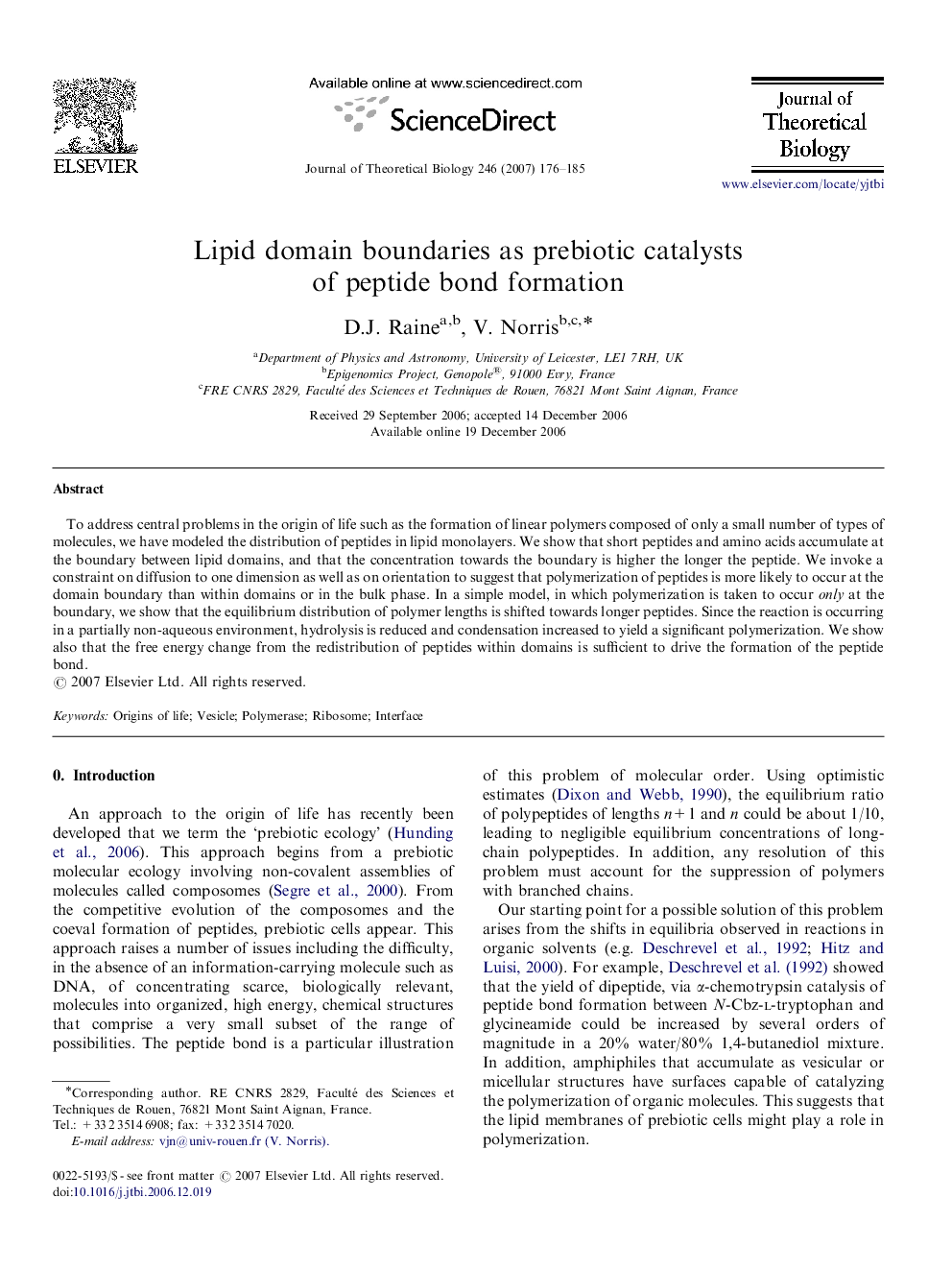| Article ID | Journal | Published Year | Pages | File Type |
|---|---|---|---|---|
| 4499320 | Journal of Theoretical Biology | 2007 | 10 Pages |
Abstract
To address central problems in the origin of life such as the formation of linear polymers composed of only a small number of types of molecules, we have modeled the distribution of peptides in lipid monolayers. We show that short peptides and amino acids accumulate at the boundary between lipid domains, and that the concentration towards the boundary is higher the longer the peptide. We invoke a constraint on diffusion to one dimension as well as on orientation to suggest that polymerization of peptides is more likely to occur at the domain boundary than within domains or in the bulk phase. In a simple model, in which polymerization is taken to occur only at the boundary, we show that the equilibrium distribution of polymer lengths is shifted towards longer peptides. Since the reaction is occurring in a partially non-aqueous environment, hydrolysis is reduced and condensation increased to yield a significant polymerization. We show also that the free energy change from the redistribution of peptides within domains is sufficient to drive the formation of the peptide bond.
Related Topics
Life Sciences
Agricultural and Biological Sciences
Agricultural and Biological Sciences (General)
Authors
D.J. Raine, V. Norris,
